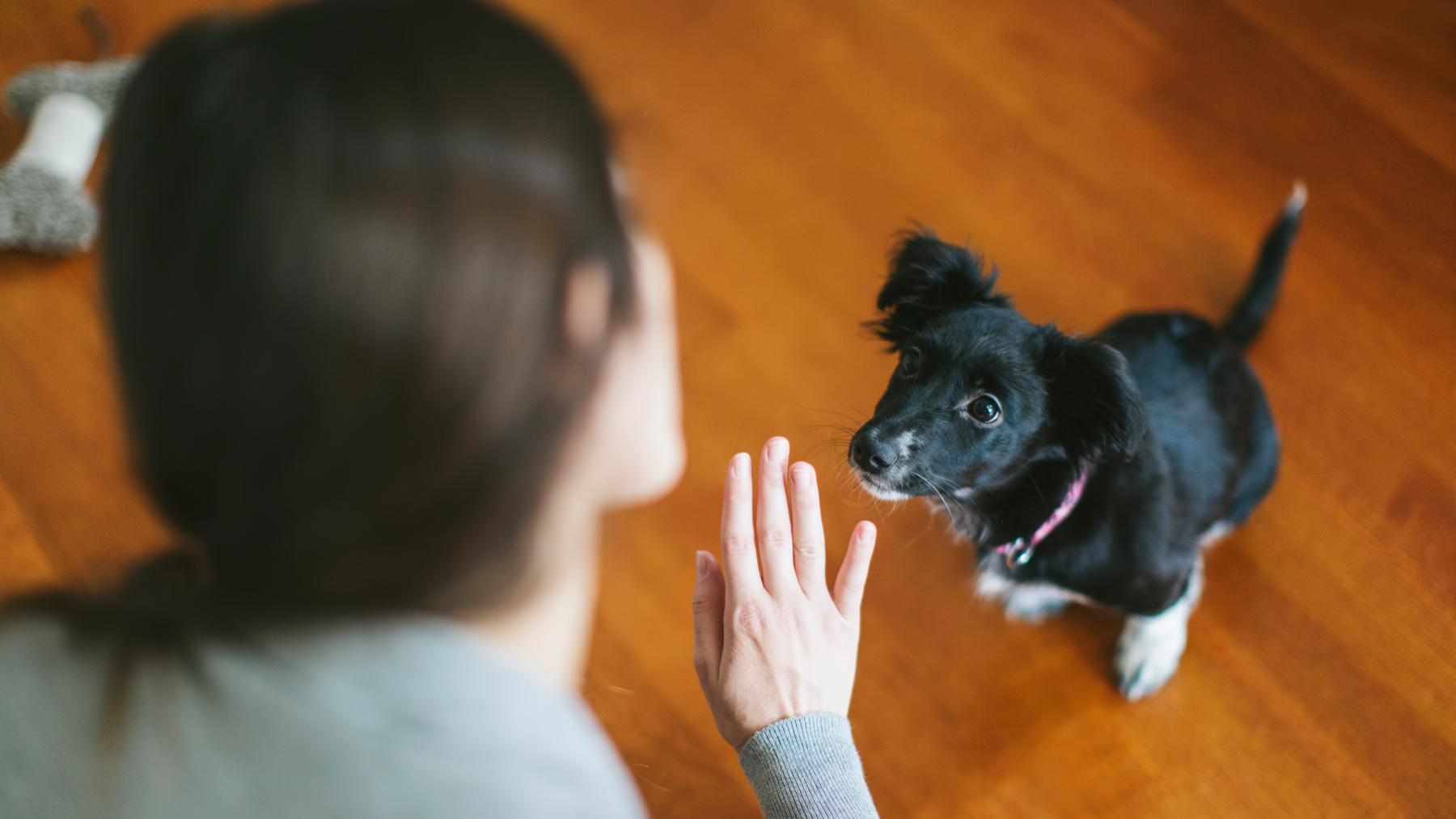Struggle to keep your dog in the sit position? Try these three trainer-approved tips
Find out why your dog doesn't stay in the sit position and how to fix this, according to a dog trainer

Sit is one of the first commands many dogs will learn so well done if you've ticked this off. However, if you notice that your dog immediately gets up after performing this command then you might want to address these three common training mistakes according to a dog trainer and how to avoid them going forward.
Some of the best dog treats are every dog owner's best friend when it comes to training your canine, but it's helpful knowing how to use these to your best advantage to reinforce the kinds of behaviors you want your dog to have.
Of course, all dogs are different, and everyone approaches training their canines differently, but hopefully, any owners struggling with a restless dog can work toward nailing the sit position following these tips from rewards-based dog trainer, Antonio Diaz, also known as Leader of the Pack.
Before reaching for your four-legged friend or grabbing those treats, here are the three common mistakes you may be making when asking your dog to sit.
One, you are rewarding your dog as soon as its butt pops up from performing the sit position.
Two, you are not using a release word after they sit. So your dog sits, you reward them, and then they get up whenever they want.
Last but not least, you are rewarding mistakes, AKA your dog gets up from sitting, you correct them by asking them to sit again but then you immediately reward this, which leads the dog to learn that getting up earns them a treat.
Get the best advice, tips and top tech for your beloved Pets
Watch below to see Diaz amusingly act as the dog in these scenarios demonstrating these three common mistakes. Then we can get onto how he'd recommend amending these mistakes.
Watch this dog trainer demonstrate how to keep your dog in the sit position:
Whether you are a first-time dog owner and just getting to grips with puppy behavior or you've had dogs all your life, it's ok if you do any of the mistakes identified by Diaz. Dog training is as much a learning process for humans as it is for the dog. Thankfully, Diaz can help you escape these habits, we've laid out his advice below for you to refer to:
- Rewarding them when they pop up: instead, when your dog pops up to get the reward, Diaz says, "Take your hand away, make your dog sit and try again. They are probably going to try to get up again, keep doing that until they stay in the sit as you reach in and reward them."
- Not using a release word: Diaz advises, "Make sure your dog waits for their release word so that when you put them in the sit position and reward them if they get up without your permission, stop them, put them back into a sit, wait a few seconds and then release them.
- Rewarding mistakes: Think about it from your dog's perspective, if you keep rewarding them every time your correct them, they are going to keep on making mistakes in order to get the reward, explains Diaz. Instead, he says "Correct your dog, put them back into the sit but don't reward them. Wait until you decide and then you can release them."
If you don't like relying on using treats too often, then perhaps after mastering the tips above you could try and phase out training treats. You can attempt to implement real-life rewards as an alternative to treats. For example, opening the door for your dog to run around in the garden or giving them a toy to play with.

Jessica holds a journalism degree from Cardiff University and has authored articles for renowned publications, including PetsRadar, Fit&Well, LiveScience, Runner's World, The Evening Express, and Tom's Guide. Throughout her career in journalism she has forged connections with experts in the field, like behaviorists, trainers, and vets. Through her writing, Jessica aims to empower pet owners with accurate information to enhance their furry companions' lives.
